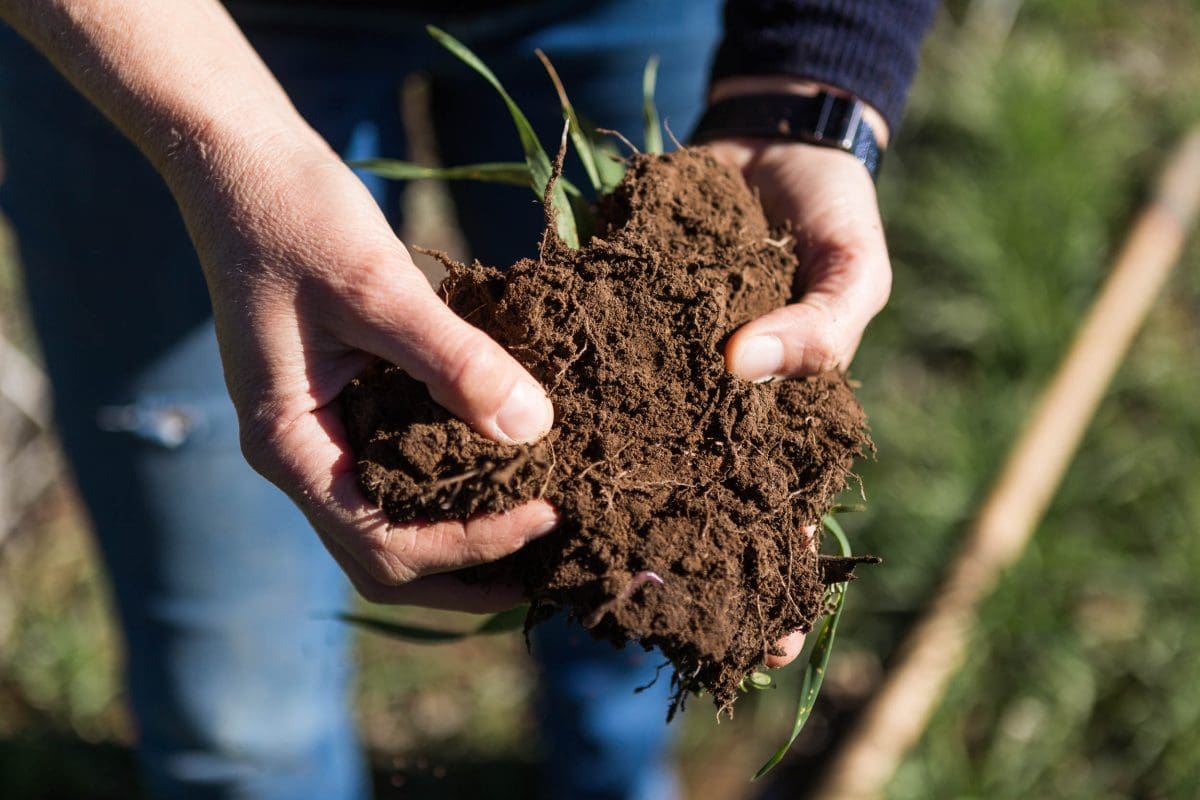
Regenerative agriculture was the key focus of a recent webinar hosted by the UWA Public Policy Institute. Photo: Soil CRC
SHOULD the term ‘regenerative agriculture’ be changed to encourage more growers to adopt the practices encompassed within the emerging industry?
This was the topic that was debated by speakers during the University of Western Australia Public Policy Institute’s recent webinar, Sustainable food systems: food production & security in a changing climate.
Based in Western Australia, Wheatbelt Development Commission director regional development, I-Lyn Loo, called the term “divisive”.
She said using different language may reduce the level of pull-back from growers and others in the agricultural industry.
“In the end, regenerative agriculture is quite a contentious term still,” Ms Loo said.
“It is getting more mainstream now… as we are moving into the early adopter phase.
“There are challenges in accepting that term.”
She said often the term implies that growers need to change their practices in order to consider themselves good land managers.
“I feel that our farmers, they love their land, and they are so connected to it.
“I think unfortunately we have talked about the narrative in the wrong way or a different way that challenges that value.
“So, if you become regenerative, you were considered a bad land manager previously, so therefore you have to change.”
Ms Loo said this was never the intent of the regenerative farming movement and, if a language change will alter perceptions, then it may be necessary to affect change.
“If regenerative agriculture is divisive language, then we may have to move away from it into more outcomes-based conversations, like natural capital accounting, talking about carbon sequestration into the soil and soil health and recovering biodiversity.”
Ms Loo is currently completing a project to investigate drivers for regenerative agriculture in Australia as part of the Winston Churchill Trust Fellowship program.
The project is also looking into ways to incentivise adoption of these practices, such as through consumer behaviours and price premiums.
A relatively new farming movement, regenerative agriculture includes practices that works to improve soil health, carbon storage and biodiversity as well as limit external inputs.

Wide Open Agriculture managing director Ben Cole
Wide Open Agriculture (WOA) founder Ben Cole called the practice “farming with nature and not against it”.
Located in WA, WOA is an Australian leader in the regenerative agriculture movement with all farmers contracted to provide produce to the company pledging to follow these farming practices.
He told the webinar that WOA sees the movement as an “important alternative” to traditional farming systems.
“Conventional industrial farming has played an incredible role for producing food and has, since its introduction in the ‘60s, brought immense gains but…a lot of those gains have become quite wasteful,” Dr Cole said.
“We believe farming systems are starting to turn and shift and farmers themselves and agronomists and input companies are starting to think: Is there another way of producing healthy nutrient-rich food?
“Perhaps there may be some reductions in yield but the overall impact looking at the wider holistic impact is dramatically reduced.”
Mr Loo said in her discussions with Wheatbelt growers, she believes these practices are widely used, just not under the official banner of “regenerative agriculture”.
“I think, talking about Western Australian farmers, a lot of them are doing it anyway.
“The practices like minimum till, keeping cover crop, incorporating livestock, it is part of the system, it is part of what they do anyway.”

I-Lyn Loo is investigating why growers adopt regenerative agriculture practices. Photo: Winston Churchill Trust
Practices to outcomes
Alongside potentially re-thinking the terminology, Ms Loo said she is also seeing a shift from defining success by increasing land management practices to quantifying improved soil and biodiversity outcomes.
She said this is a positive step considering not all regenerative agriculture practices will suit every property.
“More and more what I am seeing globally is people are moving from defined practices, because they are quite different from farm to farm, place to place.
“They are defining it as outcomes based.
“They are talking about improving soil health including carbon sequestration, recovering biodiversity and some of them include things like… sustainability of the communities and of course the sustainability of the businesses.”
Dr Cole said he sees that the focus should also be on practices that are resulting in measurable outcomes for the soil and the wider environment.
“Whether that is around the word regenerative, we don’t really care, but it is around looking at practices that are making tangible impacts on climate change and biodiversity.”
Global pressure
From multi-national companies and government policy, regenerative agriculture practices are increasingly becoming part of the conversation around food production.
Ms Loo said food companies General Mills and Nestlé are examples of organisations pledging to increase the amount of ingredients produced at regenerative farms.
In 2019 General Mills committed to advance regenerative agriculture on 1 million acres of farmland by 2030 as part of an overall climate and water policy.
Nestlé also pledged to source 50 per cent or 14 million tonnes of its ingredients through regenerative agricultural methods by 2030.
She said governments are following the lead of companies and introducing sustainable agriculture and regenerative farming targets and police.
Ms Loo said one key example of this was a chapter in the free-trade agreement between the European Union and New Zealand which committed to sustainable food system principles.
“This is a very fascinating development for me; it is not just the food companies, now we are moving into policies.”
As part of the webinar event, Ms Loo and Dr Cole were also joined by UWA School of Agriculture’s Caitlin Moore and OzHarvest chief executive officer and founder Ronni Kahn AO.

Regenerating, restoring, rebuilding ecosystems for improve landscape function and farm productivity is well defined after years of research, on farm trials and innovation and industry development.. Measuring the impact and outcome and sharing it across ESG pillars is the important bit.
To do so we need:
Common baseline that delivers market insights, best practices, data and support (GHG, natural capital, soil health etc. benchmarks).
Ability to track and report progress consistently against common KPIs (common benchmark/baseline as starting point).
Promote and measure practice uptake/adoption and improvement to support carbon sequestration/natural capital improvement claims (use progress against the baseline of individual, product or group/system to showcase progress – and opportunity for further investment).
Common guideposts/benchmarks for market/suppliers to demonstrate adoption (add the above to supply chain and customer sustainability objectives to ensure the on-farm action is aligned to the product and not separated at each supply chain or government/industry reporting sector).
Ability to test/leverage new technology to enable funding, tracking and scaling (use the above to identify opportunities to align and adopt current/existing research/pathways – or identify new research pathways that can be delivered together with the end -user for improved adoption).
Communicate initiatives, opportunities and outcomes under a common language/platform and objective (ABSF and GRSB for example).
Restore landscapes and build understanding of key issues, including re/deforestation, species biodiversity,
restoration of degraded ecosystems and communities (use the productivity outcomes for natural capital production – but gather the additional outcomes under common/known and reported metrics that show natural capital value beyond production – and evidence for ESG outcomes off farm).
My feeling the lions share of these components exist – regardless of what we name them or who reports on them. The bit that is missing is a full supply chain approach to recognising and reporting these outcomes.
My two bobs worth.
Full names required for future reader comments please Mick – as per our long-standing comment policy. Editor
Sorry – auto fill.
Mick Taylor
Trevor Whittington right on the money – Regen Ag needs solid and clear definitions as well as clear guidelines to achieve the results needed (healthy soils = healthy food = healthy consumers).
Perhaps better to focus on promoting adoption of the practices where they make sense rather than on the name.
No point changing the name and calling it GreenCarbon Ag or some other magical term if it remains undefined.
Better to stick with regenerative ag and put some solid definitions around it. Simply saying healthy soils or healthy food is no different to the health food or alternative medicine sectors they prefer marketing titles to science